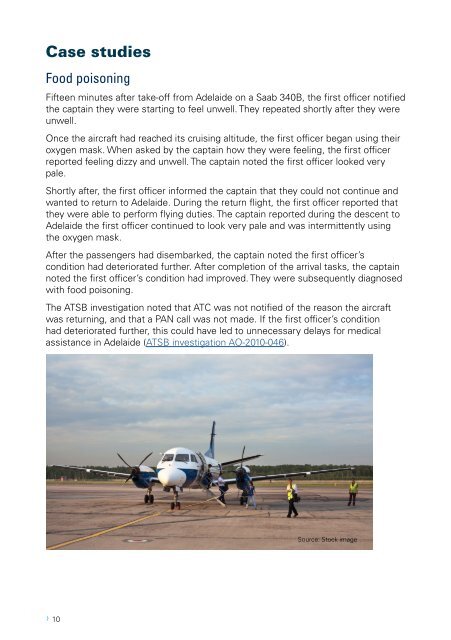Pilot incapacitation occurrences 2010–2014
8rKXy6YKY
8rKXy6YKY
You also want an ePaper? Increase the reach of your titles
YUMPU automatically turns print PDFs into web optimized ePapers that Google loves.
Case studies<br />
Food poisoning<br />
Fifteen minutes after take-off from Adelaide on a Saab 340B, the first officer notified<br />
the captain they were starting to feel unwell. They repeated shortly after they were<br />
unwell.<br />
Once the aircraft had reached its cruising altitude, the first officer began using their<br />
oxygen mask. When asked by the captain how they were feeling, the first officer<br />
reported feeling dizzy and unwell. The captain noted the first officer looked very<br />
pale.<br />
Shortly after, the first officer informed the captain that they could not continue and<br />
wanted to return to Adelaide. During the return flight, the first officer reported that<br />
they were able to perform flying duties. The captain reported during the descent to<br />
Adelaide the first officer continued to look very pale and was intermittently using<br />
the oxygen mask.<br />
After the passengers had disembarked, the captain noted the first officer’s<br />
condition had deteriorated further. After completion of the arrival tasks, the captain<br />
noted the first officer’s condition had improved. They were subsequently diagnosed<br />
with food poisoning.<br />
The ATSB investigation noted that ATC was not notified of the reason the aircraft<br />
was returning, and that a PAN call was not made. If the first officer’s condition<br />
had deteriorated further, this could have led to unnecessary delays for medical<br />
assistance in Adelaide (ATSB investigation AO-2010-046).<br />
Source: Stock image<br />
› 10


